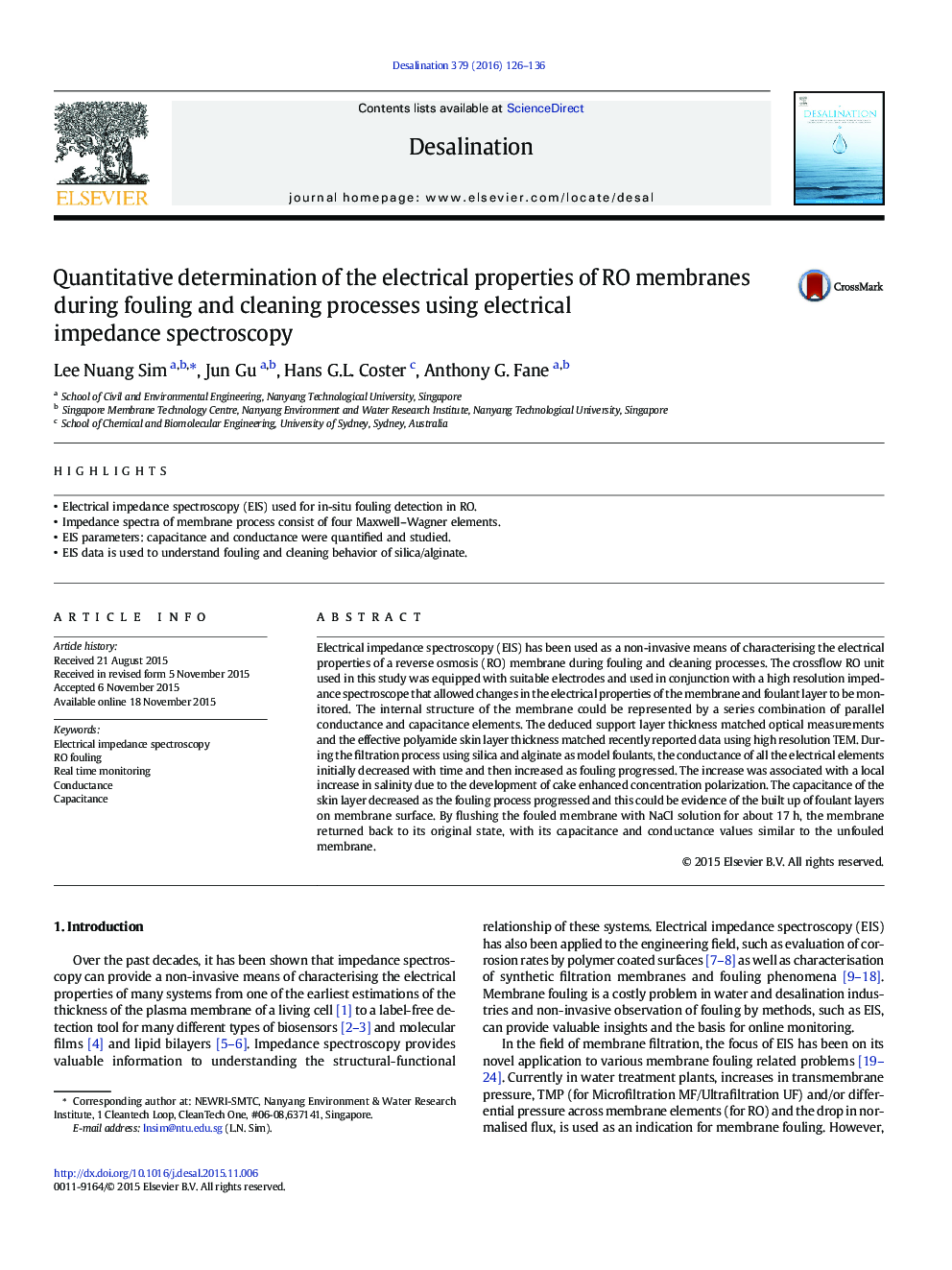| Article ID | Journal | Published Year | Pages | File Type |
|---|---|---|---|---|
| 622927 | Desalination | 2016 | 11 Pages |
Abstract
Electrical impedance spectroscopy (EIS) has been used as a non-invasive means of characterising the electrical properties of a reverse osmosis (RO) membrane during fouling and cleaning processes. The crossflow RO unit used in this study was equipped with suitable electrodes and used in conjunction with a high resolution impedance spectroscope that allowed changes in the electrical properties of the membrane and foulant layer to be monitored. The internal structure of the membrane could be represented by a series combination of parallel conductance and capacitance elements. The deduced support layer thickness matched optical measurements and the effective polyamide skin layer thickness matched recently reported data using high resolution TEM. During the filtration process using silica and alginate as model foulants, the conductance of all the electrical elements initially decreased with time and then increased as fouling progressed. The increase was associated with a local increase in salinity due to the development of cake enhanced concentration polarization. The capacitance of the skin layer decreased as the fouling process progressed and this could be evidence of the built up of foulant layers on membrane surface. By flushing the fouled membrane with NaCl solution for about 17Â h, the membrane returned back to its original state, with its capacitance and conductance values similar to the unfouled membrane.
Related Topics
Physical Sciences and Engineering
Chemical Engineering
Filtration and Separation
Authors
Lee Nuang Sim, Jun Gu, Hans G.L. Coster, Anthony G. Fane,
